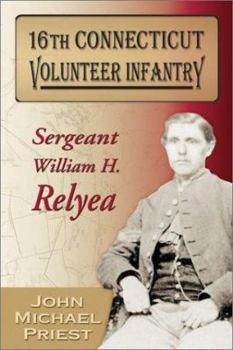16th Connecticut Volunteer Infantry: Sergeant William H. Relyea
Edited by high school students under the direction of John Michael Priest, 16th Connecticut Volunteer Infantry: Sergeant William H. Relyea" will offer the reader a detailed firsthand look into the... This description may be from another edition of this product.
Format:Paperback
Language:English
ISBN:1572492902
ISBN13:9781572492905
Release Date:January 2004
Publisher:White Mane Publishing Company
Length:234 Pages
Weight:0.90 lbs.
Dimensions:0.7" x 5.9" x 8.7"
Customer Reviews
1 rating
A New Old Regimental History
Published by Thriftbooks.com User , 19 years ago
John Priest calls the 16th Connecticut an "Average" Federal infantry regiment. I would rather call it an "unfortunate" Federal infantry regiment. Raised in Hartford County in August 1862, the 16th Connecticut was assigned to the Ninth Army Corps and found itself on the extreme left flank of the Army of the Potomac at the Battle of Antietam in a cornfield facing A.P. Hill's Confederate division just up from Harpers Ferry, perhaps carrying US flags from the surrendered garrison. The 16th had been mustered in less than a month previously and the soldiers had never been taught even to load their muskets. Hill's men just walked up and opened fire and by the time the 16th's survivors ran to the rear, the unit had suffered about 200 casualties. Twenty years ago I was a museum director in West Hartford and we had a file of letters from a soldier in the 16th and he certainly never got over the trauma of this disaster. The 16th went on to fight well at Fredericksburg, and later in the Suffolk Campaign. However, its bad luck followed as nine companies were forced to surrender at Plymouth, North Carolina in April 1864 when that garrison was captured by the Confederates. The enlisted men ended up in Andersonville where half of them died (including my letter writer). William Relyea was on detached service at the time of Plymouth, so he missed the surrender. His regimental history continues into January 1865 when it simply stops. But, as a result, this is a fuller history than Blakeslee's small history published just after the end of the war.The editing is generally OK, although nothing fancy. There are no maps, but then again, Priest has had trouble with maps in the past. Because the work was done in Maryland, there is no feel for Connecticut history and locations. The historic town of Simsbury is given as Simburg on page 2, for example. The biggest shortcoming is that there is no account of William Relyea the author and how this manuscript came to exist in the Connecticut Historical Society. Priest and the boys and girls have not consulted pension files, but restrict themselves to printed Connecticut sources to ID the soldiers. I wish I lived within driving distance of the National Archives; they do. Sounds like a great class trip to me.Unpublished regimental histories are like hen's teeth. I have been fortunate to edit and publish a history of the 1st Vermont Cavalry and have a copy of a fragmented manuscript history of the 4th New Hampshire Infantry. These manuscripts should be published. Priest and his class have done a good job on the History of the 16th Connecticut. Even though it might have been done a bit better, I highly recommend this book and this is a very useful addition to Antietam, Fredericksburg, and the coastal campaigns. Good job guys.





